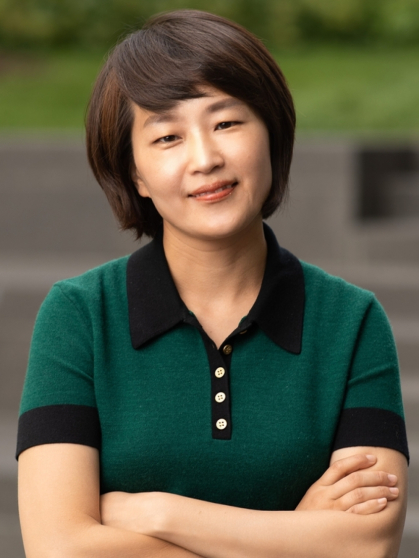Algorithm-Based Strategy Shows Promise in Reducing Urban Poverty

As aid organizations turn to artificial intelligence to optimize resources, a Rutgers expert reports on a new targeting approach that puts people first
When the COVID-19 pandemic hit, aid organizations worldwide struggled to identify vulnerable households quickly and fairly. Many people who needed help were left behind.
Woojin Jung, an assistant professor at the Rutgers School of Social Work, says she has found a better strategy. Her team has developed a method that blends sociodemographic data and household surveys with community perceptions and satellite imagery to predict urban poverty – and to put people at the center of aid targeting.
“Existing approaches don’t always work during shocks or rapid changes,” Jung said. “We wanted to find a way to identify vulnerable households at speed and scale in urban settings.”
The findings are published in the journal Sustainable Cities and Society.

Conventional methods of identifying at-risk populations rely on analysis of household demographic data. Jung wondered whether adding high-resolution geo-spatial features could boost poverty predictions or whether spatial features alone, without traditional demographic information, might help pinpoint asset- or food-deprived households.
Two areas of her research break new ground, she said. First, the models aim to predict not only wealth scores but food consumption and nutritional outcomes, which are notoriously difficult to estimate. Second, the analysis pushes below the usual “small area” scale to predict poverty at the level of individual households.
She also wanted to focus on the urban poor. Unlike rural poverty – where entire villages may lack food, water or services – urban poverty is uneven. One street may have reliable access to electricity, while the next doesn’t. This makes cities more difficult to analyze and aid harder to target.
To address these challenges, Jung and colleagues at France's University of Bordeaux, and Turkey’s Istanbul Technical University, conducted a survey of 300 households in Zambia’s capital city of Lusaka, one of southern Africa’s fastest growing communities with a population of 3.9 million. Their goal was to winnow down the variables typically used to assess poverty by using community insights to do the work.
In addition to wealth indicator questions, such as ownership of appliances and how often they eat iron-rich food, respondents were asked open-ended questions about the characteristics they thought made their neighborhood rich or poor.
Several themes emerged, including availability of public services such as health care and electricity, personal living standards such as car ownership and indoor plumbing, and neighborhood structure.
With these additional data points, Jung then used publicly available geo-spatial tools, including satellite images and luminosity maps, to link each community’s insights with measurable conditions. Artificial intelligence (AI) and machine learning were used to train their poverty prediction models.
Across the board, the hybrid models that combined household-level data with community-informed insights outperformed models that only used the conventional data, Jung said.
The most striking finding was the degree to which the combined methodology reduced targeting errors in simulated aid delivery – by as much as 26%, Jung said. Additionally, the researchers were able to accurately identify households facing multiple deprivations by using only geo-spatial features. If applied widely in other urban settings, Jung said her model could help reduce targeting errors and poverty severity and save money in misplaced aid.
Ultimately, the study underscores the importance of engaging beneficiaries when developing aid-delivery strategies, Jung said. This is particularly important as more governments and aid organizations turn to AI and new data sources to facilitate their work.
The work in Lusaka was conducted in collaboration with the Zambian government and will be used to help it refine agricultural input assistance, such as seeds and fertilizer, to vulnerable farmers. Jung said similar partnerships are needed elsewhere to build more efficient national social safety net systems, especially as foreign aid is reduced globally.
“Changing policy isn’t just about adjusting techniques; it also about convincing people that you have their best interests in mind,” Jung said. “We can’t accomplish that without making people part of the solution.”
Explore more of the ways Rutgers research is shaping the future.


